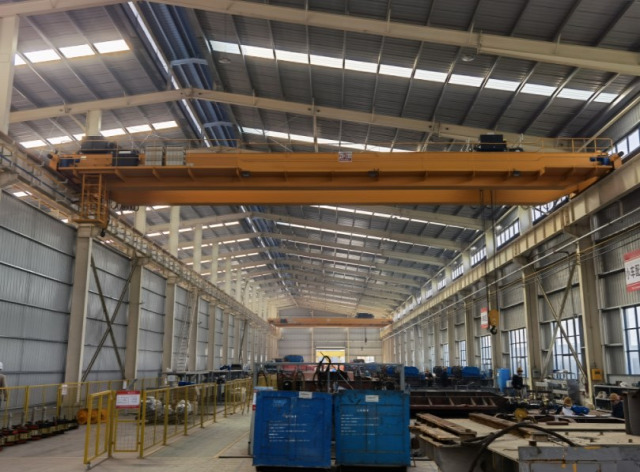A double girder overhead crane is a robust and versatile lifting machine used in various industrial applications to handle heavy loads with precision and efficiency. To ensure safe and efficient operation, it is crucial to understand the correct procedures and best practices. In this step-by-step guide, we will walk you through the process of operating a double girder overhead crane, from pre-operation checks to post-operation maintenance.

Pre-Operational Inspection
Before operating the double girder overhead travelling crane, conduct a thorough pre-operational inspection to ensure the equipment is in proper working condition. Check for any signs of wear, damage, or loose connections on the crane's structure, trolley, and hoist. Verify that all safety devices, such as limit switches and emergency stop buttons, are functioning correctly. Inspect the wire ropes or chains for any signs of fraying, kinking, or damage. Address any issues or defects before proceeding with the operation.
Review Load Capacity and Rigging
Before lifting any load, familiarize yourself with the crane's load capacity and ensure that the load does not exceed the crane's rated capacity. Confirm that the rigging, such as hooks, slings, or lifting attachments, are appropriate for the load and in good condition. Improper rigging or exceeding the crane's load capacity can lead to accidents and equipment damage.
Clear the Work Area
Clear the work area of any personnel or obstructions that may interfere with the crane's movement. Ensure that the area beneath the crane's path is free from materials, tools, or equipment that could potentially be struck or damaged during operation.
Hoist and Trolley Positioning
Position the hoist and trolley at the correct starting location for the lift. Use the pendant control or cabin control to move the hoist and trolley to the desired position. Take care to position the load directly beneath the hook to prevent any lateral swinging during the lifting process.
Signal Communication
Establish clear and effective communication with a signal person or a team member who can provide hand signals during the lifting operation. Agree on standard hand signals to indicate the desired movements of the crane, such as lifting, lowering, and traveling.
Hoisting the Load
When ready to lift the load, engage the hoist motor gradually to lift the load off the ground. Use smooth and controlled movements to avoid sudden jerks or swings. Keep an eye on the load and the hoist motor to ensure that the lifting process is steady and safe.
Monitoring the Lift
As the load is raised, monitor its position and movement to avoid collisions with any obstacles or structures. Make any necessary adjustments to the crane's position or movement as required to maintain a safe and smooth lift.
Traveling the Crane
If the lift requires horizontal movement, use the pendant control or cabin control to travel the crane along the runway beams. Maintain a slow and steady pace during the crane's movement, especially when carrying a load.
Lowering the Load
When ready to lower the load, engage the hoist motor to control the descent. Lower the load gently and avoid sudden drops to prevent damage to the load or the crane's components.
Post-Operational Maintenance
After completing the lift, conduct post-operational maintenance on the double girder overhead crane. Inspect the crane, trolley, and hoist for any signs of wear, damage, or malfunctions that may have occurred during the operation. Lubricate the moving parts as per the manufacturer's guidelines to ensure smooth and efficient performance.
Conclusion
Operating a double girder overhead crane requires careful attention to safety and precision. By following this step-by-step guide, you can ensure safe and efficient crane operations, avoiding accidents and equipment damage. Regular maintenance and adherence to manufacturer guidelines will help keep the double girder overhead crane in optimal working condition for extended periods, ensuring its reliability and performance in various industrial lifting applications.

